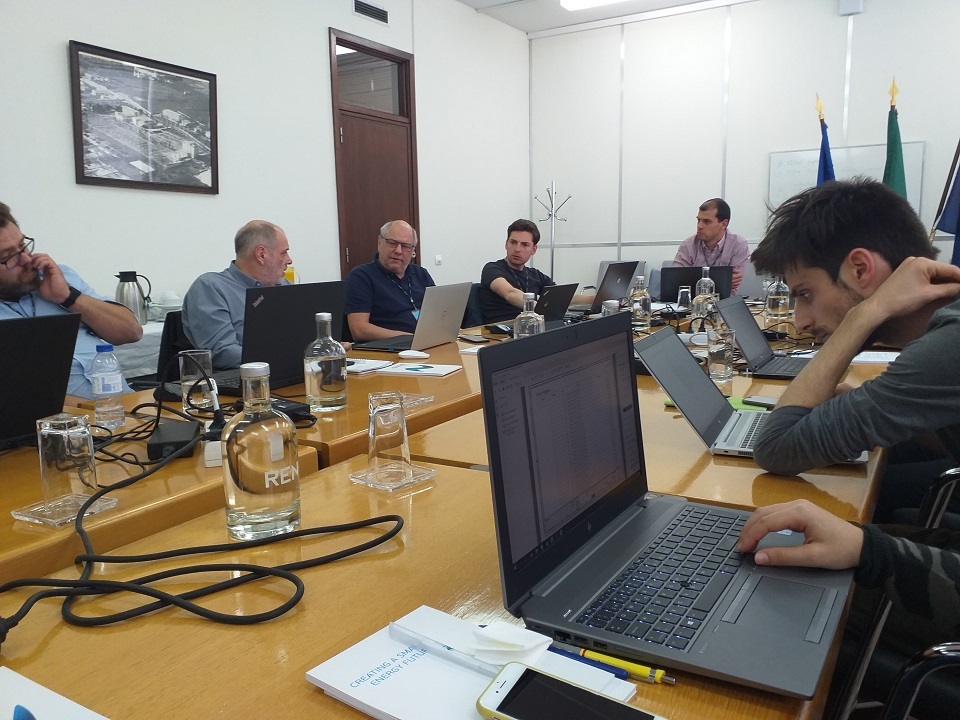R&D NESTER hosts again a meeting of the European project OSMOSE ("Optimal System-Mix of Flexibility Solutions for European Electricity")

R&D NESTER hosted again a meeting of the team participating in the Task 7.1 'Interoperability' of the European project H2020 OSMOSE ('Optimal System-Mix of Flexibility Solutions for European Electricity'), which took place on 2th and 3rd of April, at its facilities in Sacavém, as the demonstrator developed under this task will be implemented in the R&D Nester laboratory. Interoperability between devices is extremely important as it allows components of the same system to be purchased from different vendors, with the inherent technical and economic advantages.
This demonstrator aims to prove the proper functioning of a Protection, Automation and Control (PAC) system supported by the IEC 61850 communication standard. One of the aspects under study is the engineering process, that is, the sequence of steps for the configuration of a PAC system.
In addition to allowing 'real-time' interoperability between devices from different manufacturers, the IEC 61850 standard defines the SCL (Substation Configuration Language) that allows the global configuration of PAC systems, even if involving configuration tools from multiple manufacturers, that is, there is also interoperability between configuration tools.
The engineering process defined by this standard is generic, allowing several approaches, so one of the initial objectives of the project team responsible for this task was the creation of an engineering process that would make it possible to take full advantage of all the potential of the IEC 61850.
An example of a new aspect considered is the creation of a new type of SCL file that will allow the specification of IEDs (intelligent electronic devices, such as protection relays and bay units) and which utilities will be able to use in the procurement phase of PAC systems.
Another of the topics developed in this task of OSMOSE is the survey of the signals used by the TSOs that are members of ENTSO-E, work that is being done jointly with the working group IEC 61850 of that organization, and which objective is to analyse the gaps in IEC 61850, in terms of data model.
This collection is being done using a tool developed for this purpose, which also allows the exporting of the information into the SCL format, being this the first step of the referred engineering process.
R&D Nester (Ricardo Cartaxo and João Saragoça) and REN (Isabel Brito) are involved in this task. It also must be mentioned the collaboration of Nuno Costa Martins (REN), under the scope of work of collecting signals, for the help he provided regarding the signals of the protection system, his area of expertise.
The OSMOSE project is important for REN as it addresses a topic that is extremely relevant to the future of energy systems: flexibility services and the demonstration of the technologies that will enable to provide these services (e.g., energy storage or DSR); these technologies will be tested in the scope of the project, through several demonstrators. On the other hand, it also addresses the development of a holistic methodology for network planning, considering flexibility resources.
The project also aims to identify ways of scaling and replicating the results, addressing several areas of REN's interest (e.g., interoperability and coordination TSO-DSO), which will enable it to integrate these results in the future.
For more information: https://www.osmose-h2020.eu/